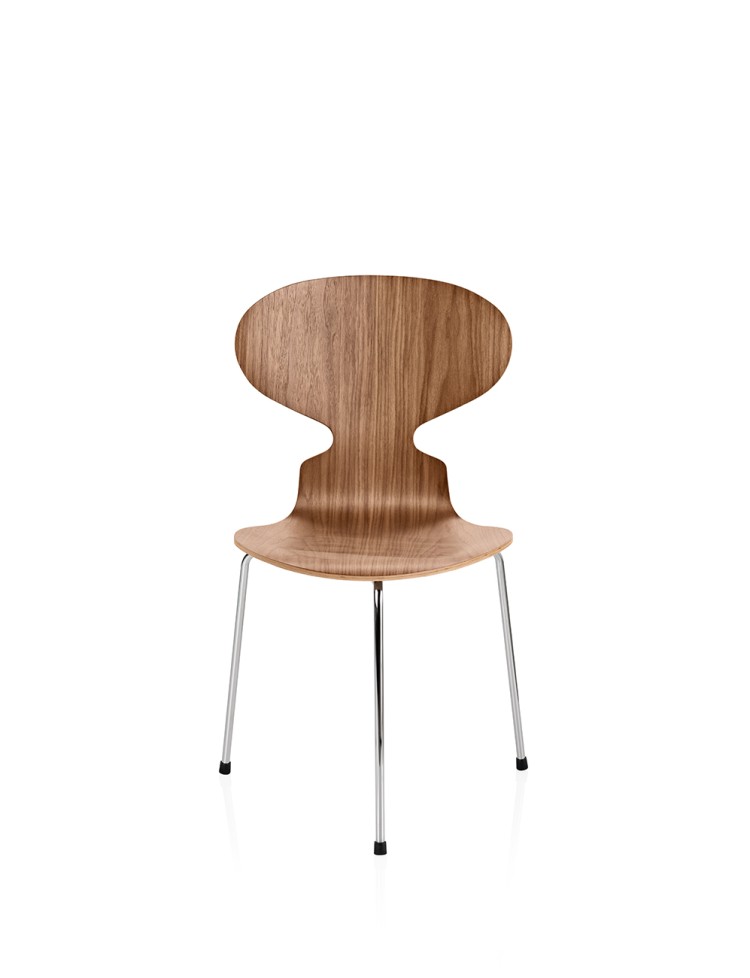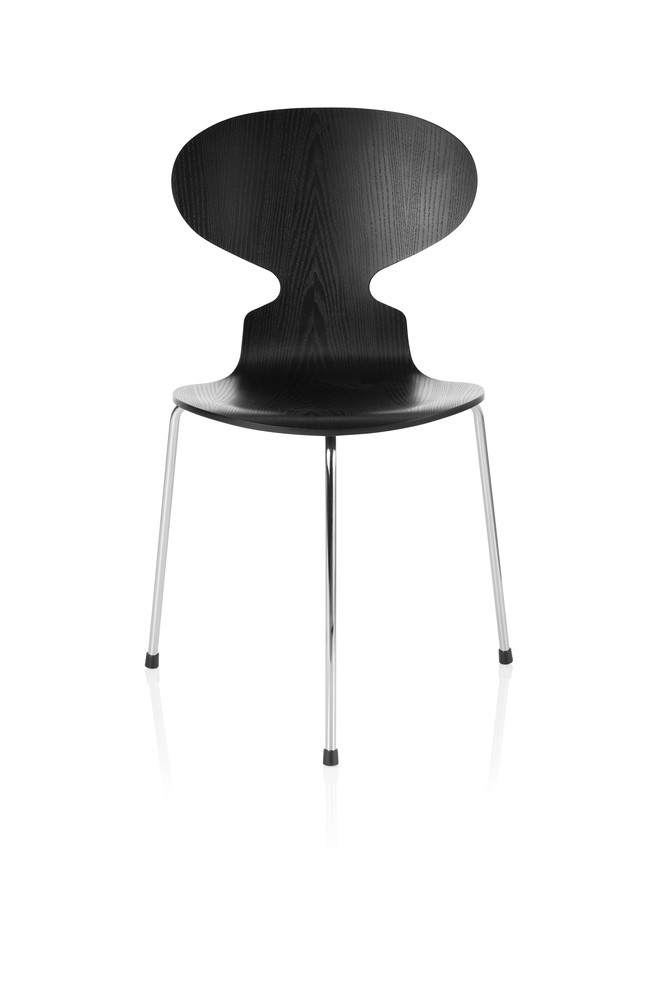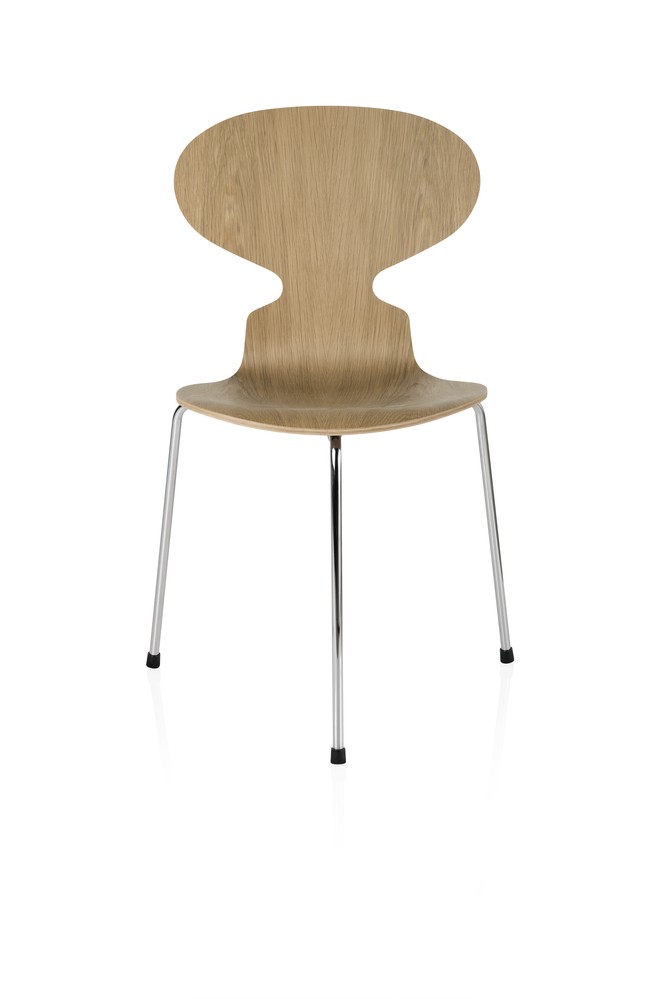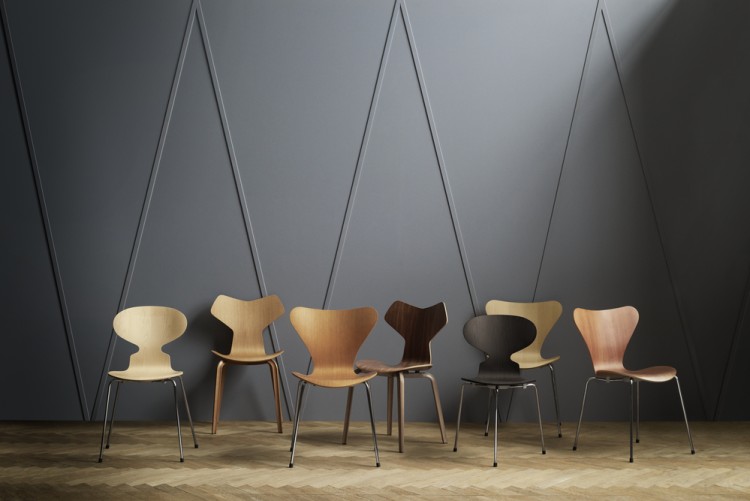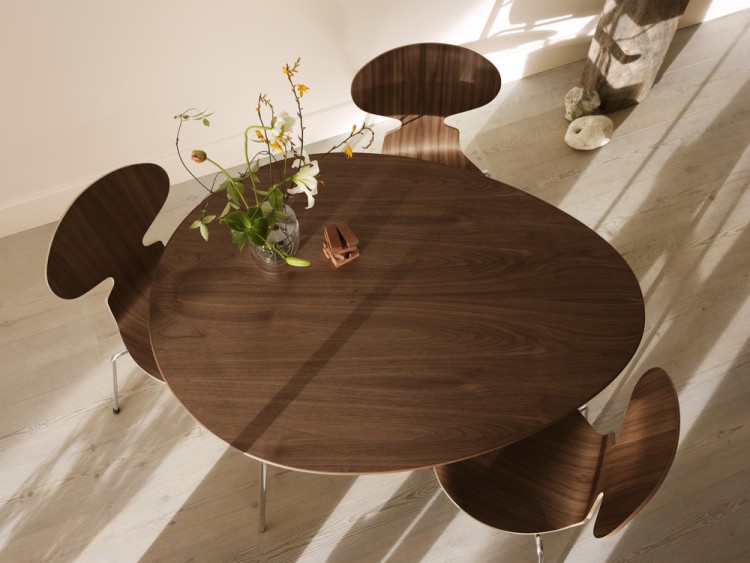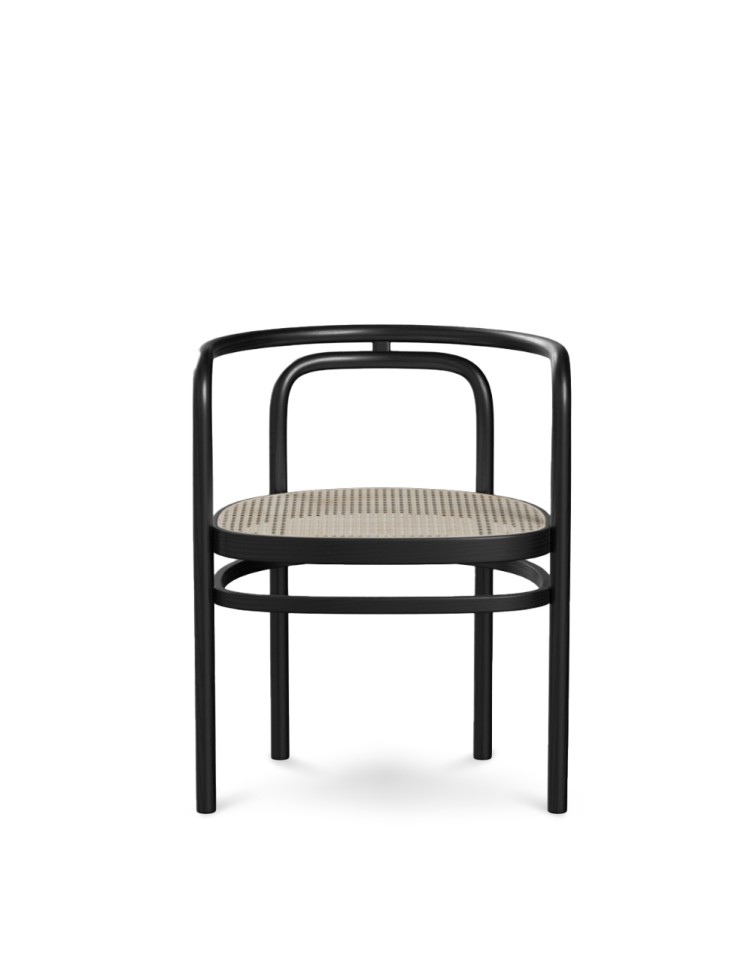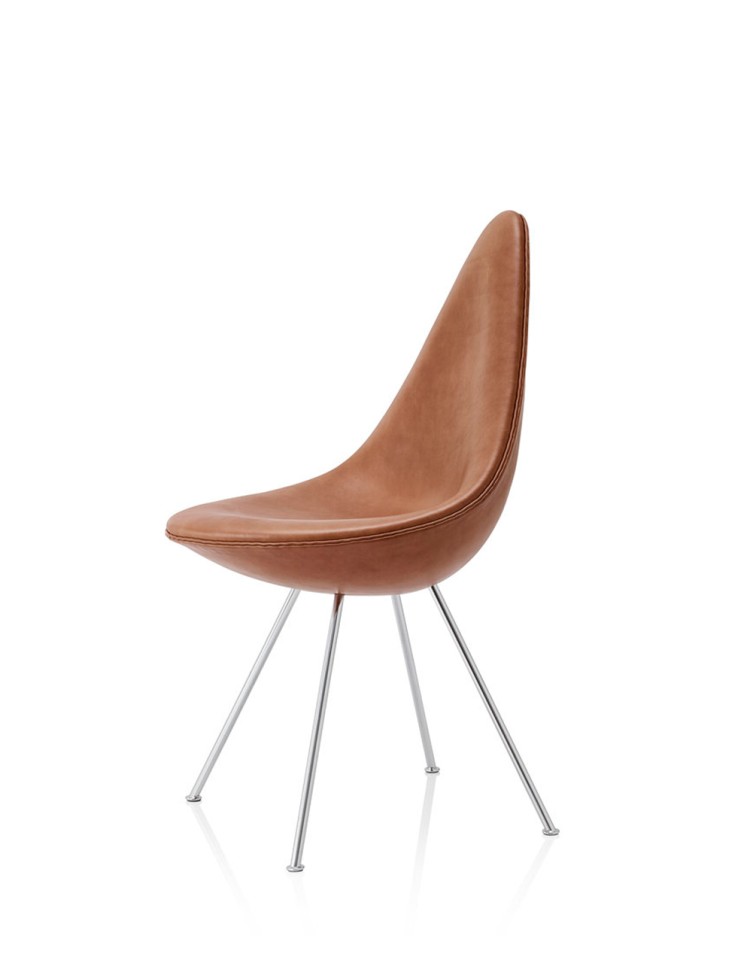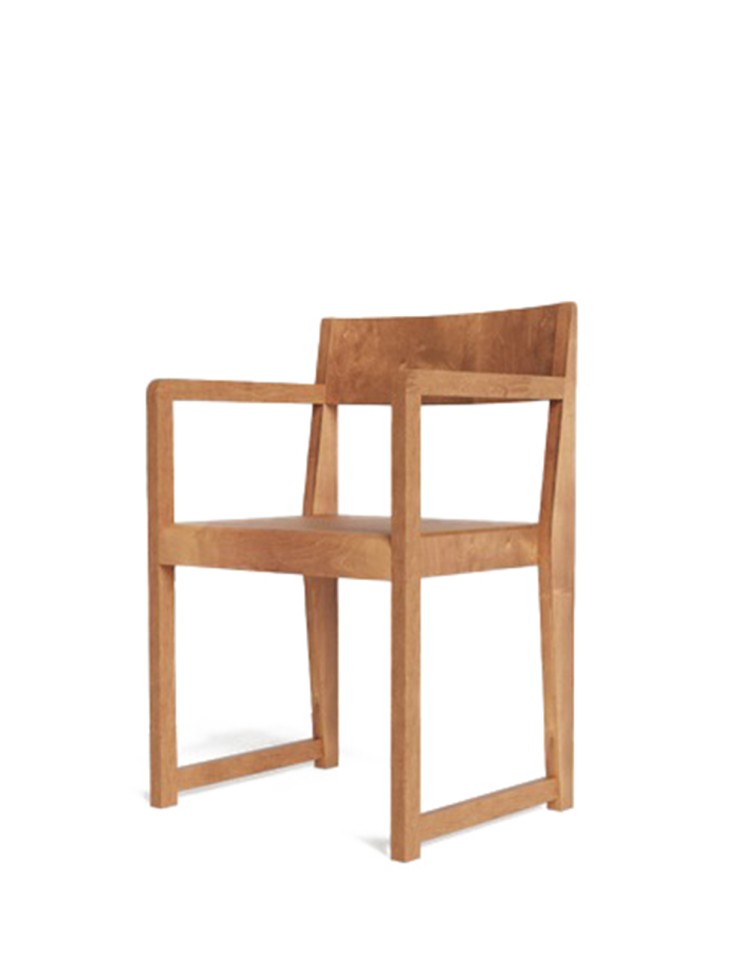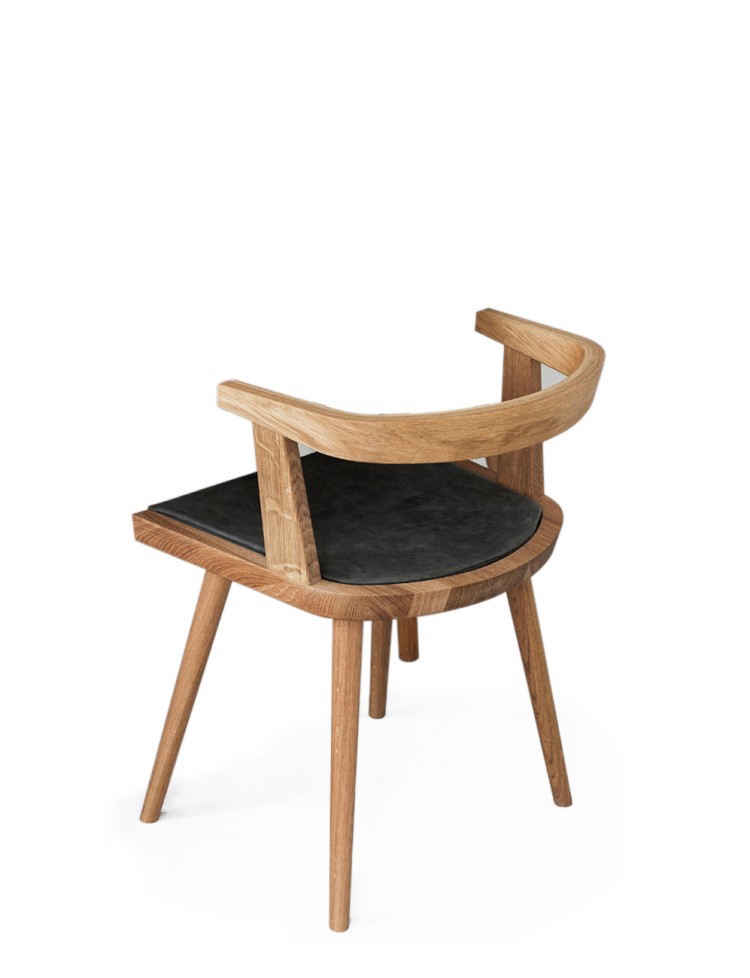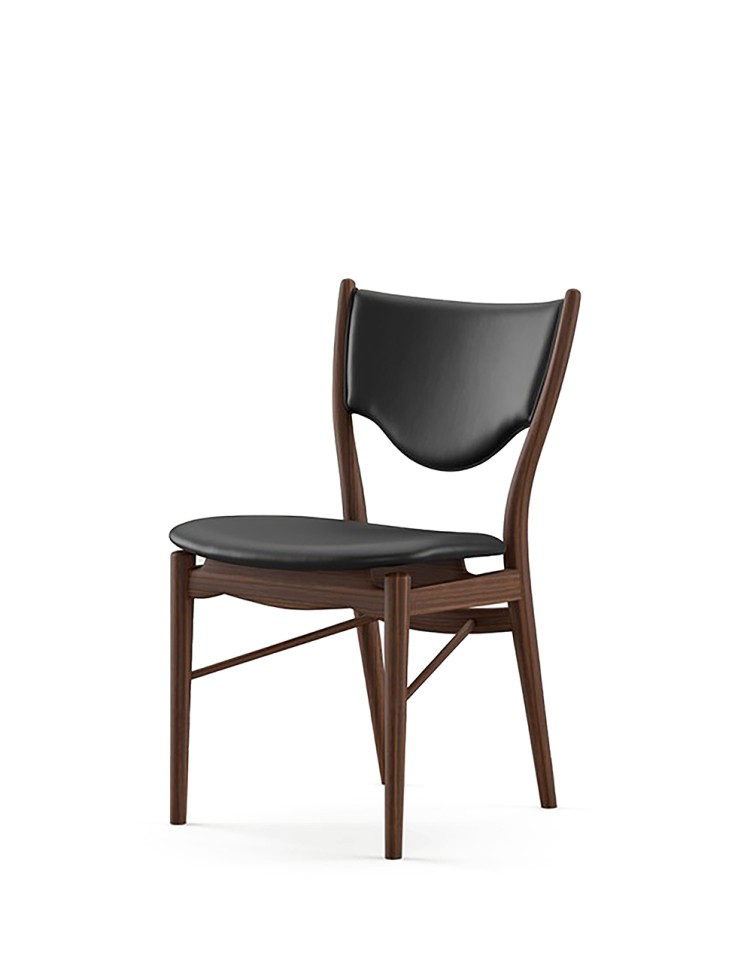Ant™ 3100
The Ant™ chair’s visual expression is delicate and artful, much like the curves of a musical instrument. Designed by Arne Jacobsen in 1952, the chair is made from nine layers of pressure moulded veneer. Its elegant shape disguises its remarkable strength and comfort.
The three-legged Ant is inspired by the simple, agricultural stools created to stand firmly on uneven floors in Danish farmhouses. The chair beautifully exemplifies Jacobsen’s understanding of the inherent strength of raw materials, consisting of only two parts: the combined seat and backrest in form-pressed plywood and a tubular steel frame.Lead Time
16 -18 weeks
Dimensions
20.4"W x 20"D x 30.3"H
Seat Height 17.3" or 18.1"
Finishes
Shell Finish: Clear Lacquered Veneer / Colored Veneer / Lacqured Veneer
Steel Base Finish: Chrome / Brown Bronze / Warm Graphite / Black / Nine Grey / Silver Grey / White (only w/ White Shell)
Fritz Hansen

Founded in Denmark in 1872, Fritz Hansen is a global leader in furniture, lighting and accessory design and production. Driven by a passion for beauty, quality, and craftsmanship, the company embodies a modern, Nordic lifestyle and collaborates with visionary artists, designers, and architects from around the world.
The brand has collaborated with Arne Jacobsen, Cecilie Manz, Hans J. Wegner, Piero Lissoni, and Poul Kjærholm, among others. Today Fritz Hansen designs are sold in more than 85 countries through 2,000 points of sale, including flagship stores in Copenhagen, San Francisco, Milan, and Tokyo. The company employs 260 people worldwide and maintains its headquarters north of Copenhagen, serving design-passionate customers through contract and retail.
Learn MoreArne Jacobsen

Arne Jacobsen was born on 11 February 1902 in Copenhagen. He first hoped to become a painter, but Jacobsen was admitted to the Architecture School at the Royal Danish Academy of Fine Arts from 1924 to 1927. He studied under Kay Fisker and Kaj Gottlob, both leading architects and designers.As early as 1925 the talented architect student was awarded an impressive silver medal for the Paris Chair, which was his very first piece of furniture at the world exhibition in Paris.
On that trip, he was struck by the pioneering aesthetic of Le Corbusier’s L’Esprit Nouveau pavilion. He also became acquainted with the rationalist architecture of Mies van der Rohe and Walter Gropius. Their work influenced his early designs including his graduation project, an art gallery, which won him a gold medal.
In 1929, only two years after his graduation from the Architecture School, the 27-year old Arne Jacobsen won the first prize for an ultramodernistic concept for “The House of the Future” at The Building and Housing Exhibition of the Academic Architects’ Association in Copenhagen. The house was built for the exhibition, and it established Arne Jacobsen as one of the most visionary and progressive Danish architects at the time. At the same time, the house was the first example of actual modernistic architecture in Denmark. It was a spiral-shaped, flat roofed house in glass and concrete, incorporating a private garage, a boathouse and a helicopter pad
Learn More